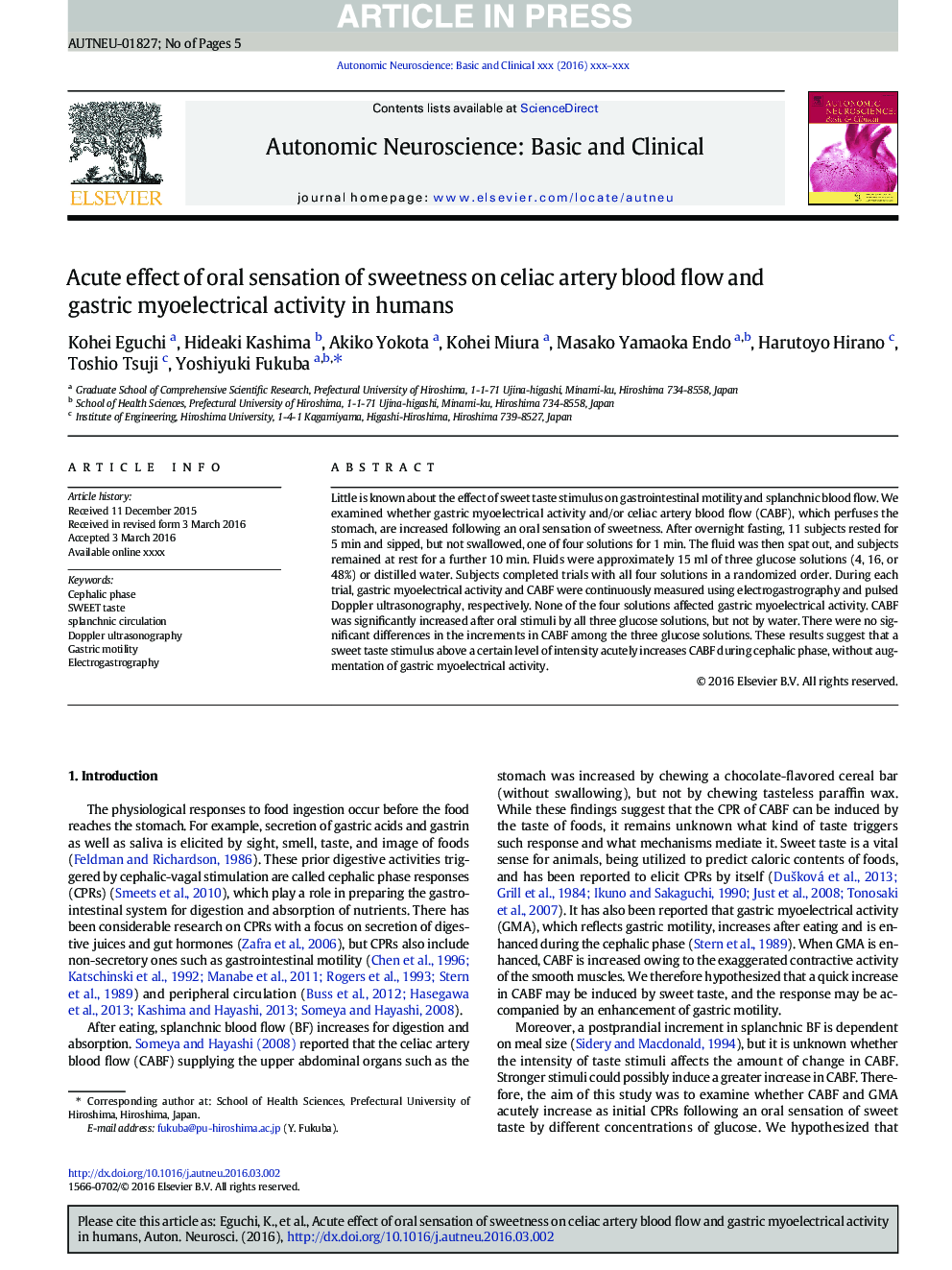| Article ID | Journal | Published Year | Pages | File Type |
|---|---|---|---|---|
| 6003887 | Autonomic Neuroscience | 2016 | 5 Pages |
Abstract
Little is known about the effect of sweet taste stimulus on gastrointestinal motility and splanchnic blood flow. We examined whether gastric myoelectrical activity and/or celiac artery blood flow (CABF), which perfuses the stomach, are increased following an oral sensation of sweetness. After overnight fasting, 11 subjects rested for 5Â min and sipped, but not swallowed, one of four solutions for 1Â min. The fluid was then spat out, and subjects remained at rest for a further 10Â min. Fluids were approximately 15Â ml of three glucose solutions (4, 16, or 48%) or distilled water. Subjects completed trials with all four solutions in a randomized order. During each trial, gastric myoelectrical activity and CABF were continuously measured using electrogastrography and pulsed Doppler ultrasonography, respectively. None of the four solutions affected gastric myoelectrical activity. CABF was significantly increased after oral stimuli by all three glucose solutions, but not by water. There were no significant differences in the increments in CABF among the three glucose solutions. These results suggest that a sweet taste stimulus above a certain level of intensity acutely increases CABF during cephalic phase, without augmentation of gastric myoelectrical activity.
Keywords
Related Topics
Life Sciences
Neuroscience
Cellular and Molecular Neuroscience
Authors
Kohei Eguchi, Hideaki Kashima, Akiko Yokota, Kohei Miura, Masako Yamaoka Endo, Harutoyo Hirano, Toshio Tsuji, Yoshiyuki Fukuba,
